The Freischütz
Leading tradition into a prosperous future
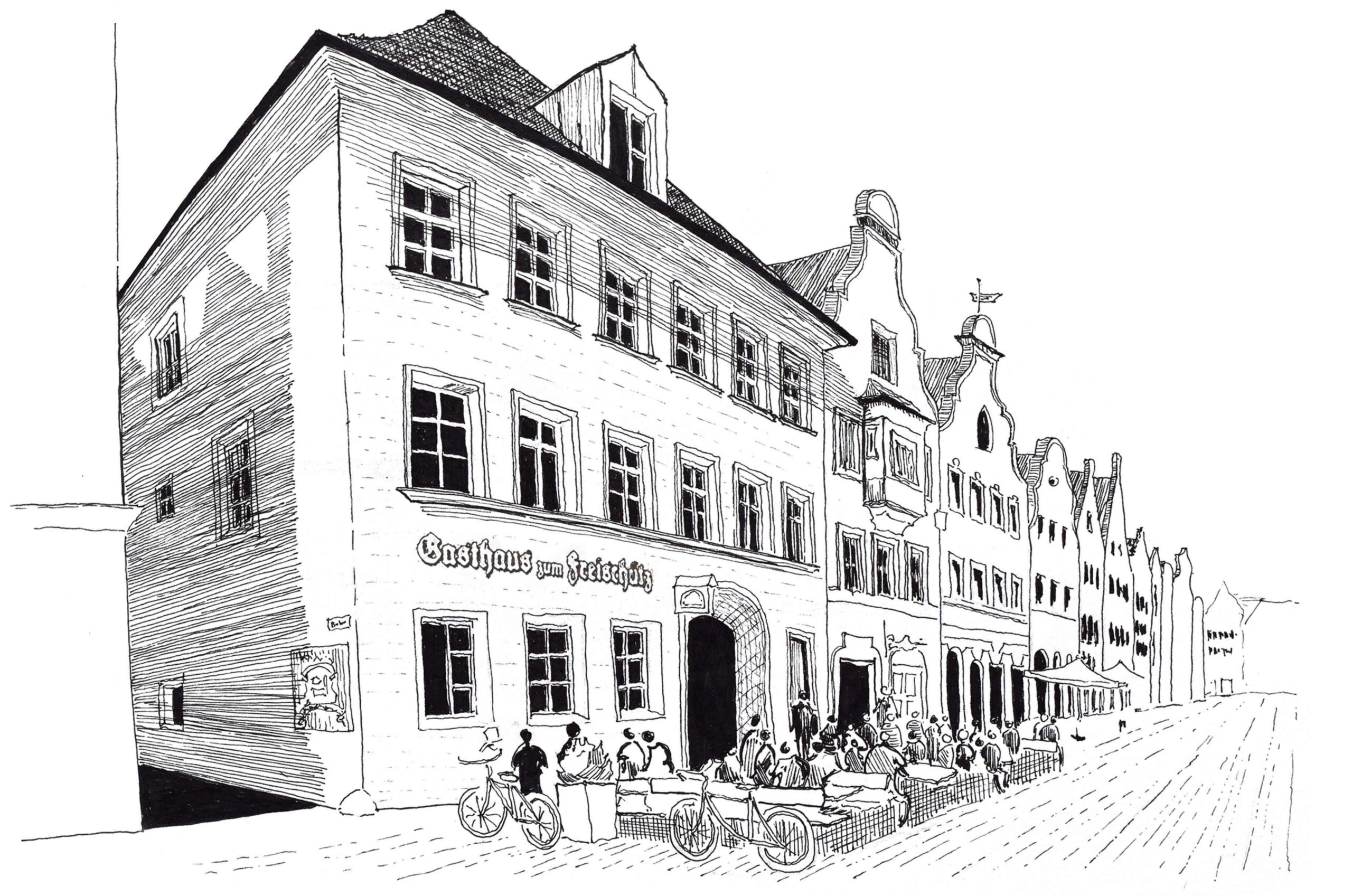
The history of the house
The property was first mentioned by name in 1475 in Theo Herzog’s house chronicle, with the license first being documented in the 16th century. Around 1820, the house received its late Classicist facade, and under the influence of Romanticism as Karl Maria von Weber celebrated great success with his opera “Der Freischütz”, the inn received its current name. It opened for the first time on March 31, 1823 under the then homeowner and landlord Andreä Galler. In 1941, councilor Ludwig Koller acquired the property, which has been owned and run by the family ever since.
A whole neighborhood in upheaval
When the building senate decided in 2010 to develop the old parking lot and adjacent houses, the approval for the renovation of the Freischütz was also granted. It was only with this decision that a coherent overall solution could be developed for the old Freischütz building and the adjoining new building (Börmergasse 1). The overarching goal of the renovation concept was, on the one hand, to preserve the historical integrity as comprehensively as possible, while simultaneously securing the future of this listed building by being able to meet modern demands for both gastronomy and living space. The house was restored to its original structure by dismantling all additive materials that were questionable from a conservation point of view. This allowed the old supporting structure to be restored in a manner appropriate to the original materials and craftsmanship.
The Freischütz in detail
-
Structural strengthening
The condition of the building was so deteriorated that the wooden components were only partially stable and able to be repurposed. This resulted in the following key measures that support the restructuring concept:
- Rotten beam heads were rehabilitated with the same profile and with an upright blade
- Badly damaged joists were completely replaced
- The top beam layer was statically improved with a ring anchor
- Wood-concrete composite ceilings improve the statics on all floors
-
Wood-concrete composite ceilings
In addition to improving the statics and load-bearing capacity, the wood-concrete composite ceilings contribute to optimal sound insulation and fire protection – two factors that are particularly important in the present building envelope of a restaurant with a living room above.
-
KFW memorial
The following modernization measures were taken as part of the renovation:
- Modernization of the outer wall with inner insulation by lining the inside with insulating brick masonry and lime plaster (because we are in a single monument, no outer insulation and plastic windows are allowed)
- Modernization of the top thermal insulation by removing the false floor and installing a good insulating material
- Modernization of the roof insulation with insulation between the rafters
- Modernization of the windows (in consultation with the LfD)
- Modernization of the heating system, connection to the district heating network
- Modernization of the restaurant’s ventilation system through heat recovery
-
Synergy of old and new building
The two adjoining buildings broaden the various potential uses of the space. For example, the elevator in the new building connects and broadens the hall in the old building. This made it possible to completely retain the beautiful old staircase of the old building. The design of the three elements of the property – living space, hotel, and catering – are typically used entirely independent of each other, but can work together as a single unit if necessary thanks to the well thought-out processes and flow of the building.
Client: EG Koller
Location: Landshut
Status: completed 2016
Service phases: 1-9

Construction Site Impressions
by Filip Fichtel
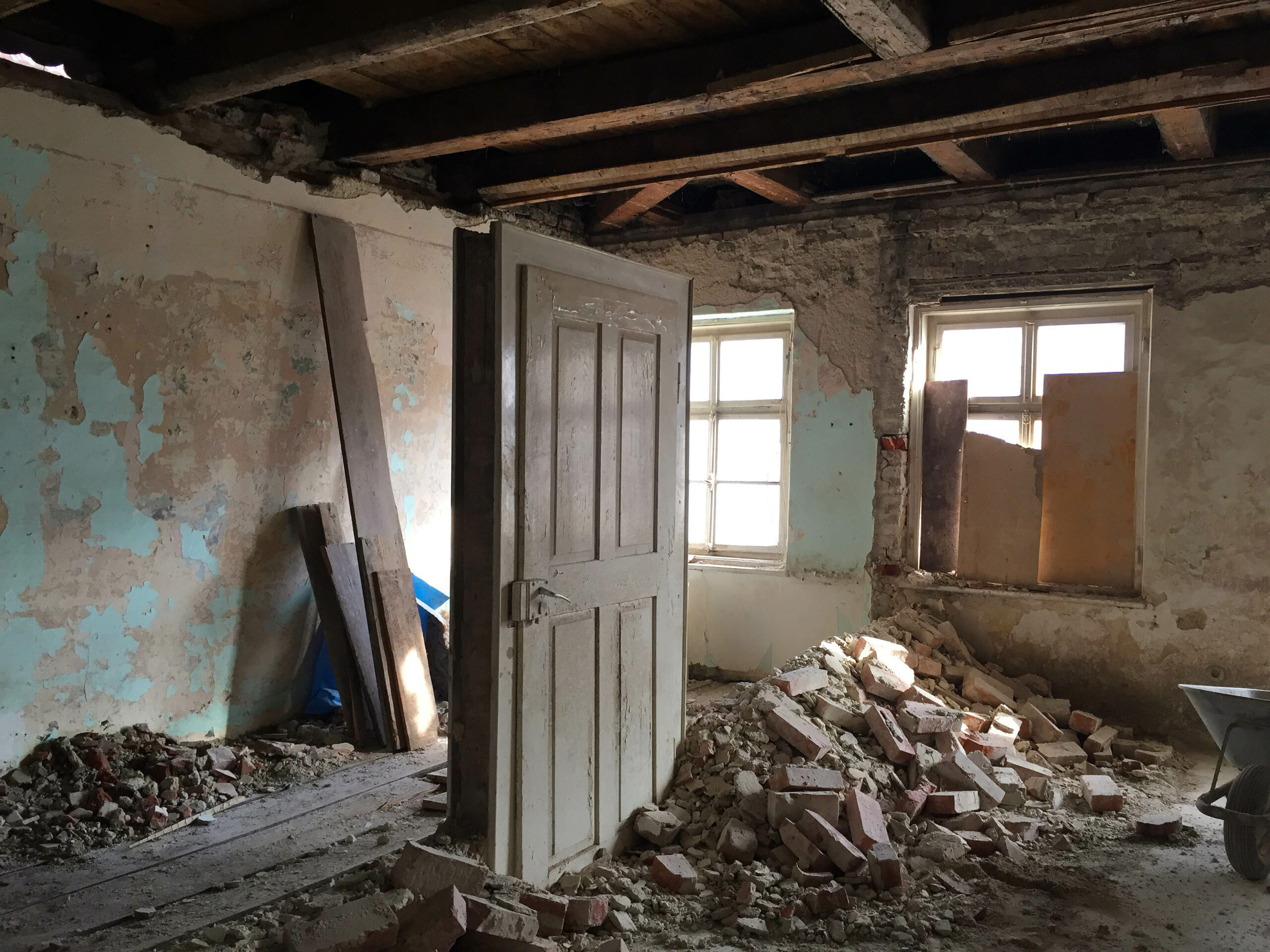
Rückbau aller konservatorisch bedenklichen Materialien
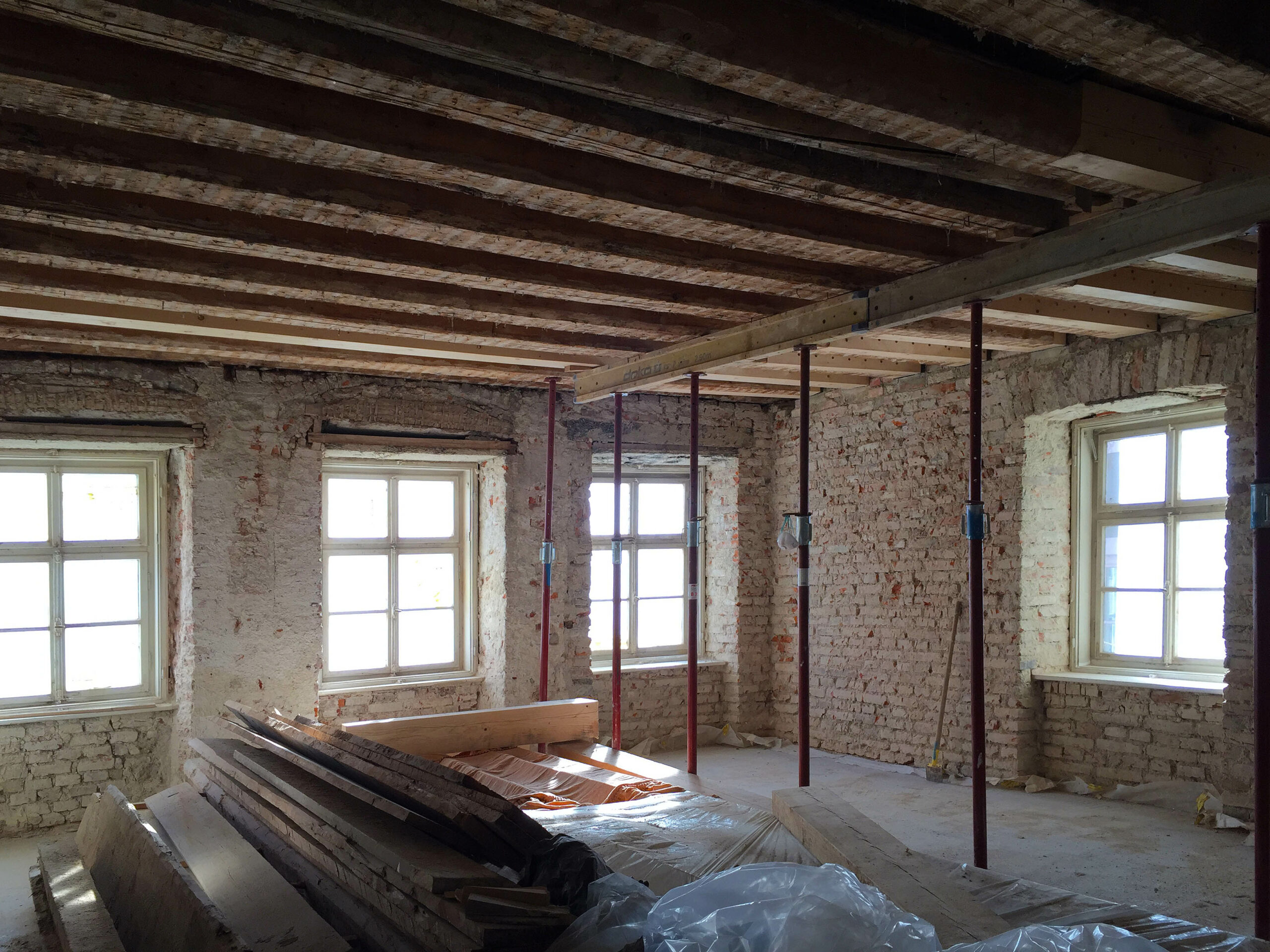
Links: Fenster noch mit alten Holzstürzen.
Rechts: bereits mit stehendem Blatt und profilgleich sanierte Balkenköpfe
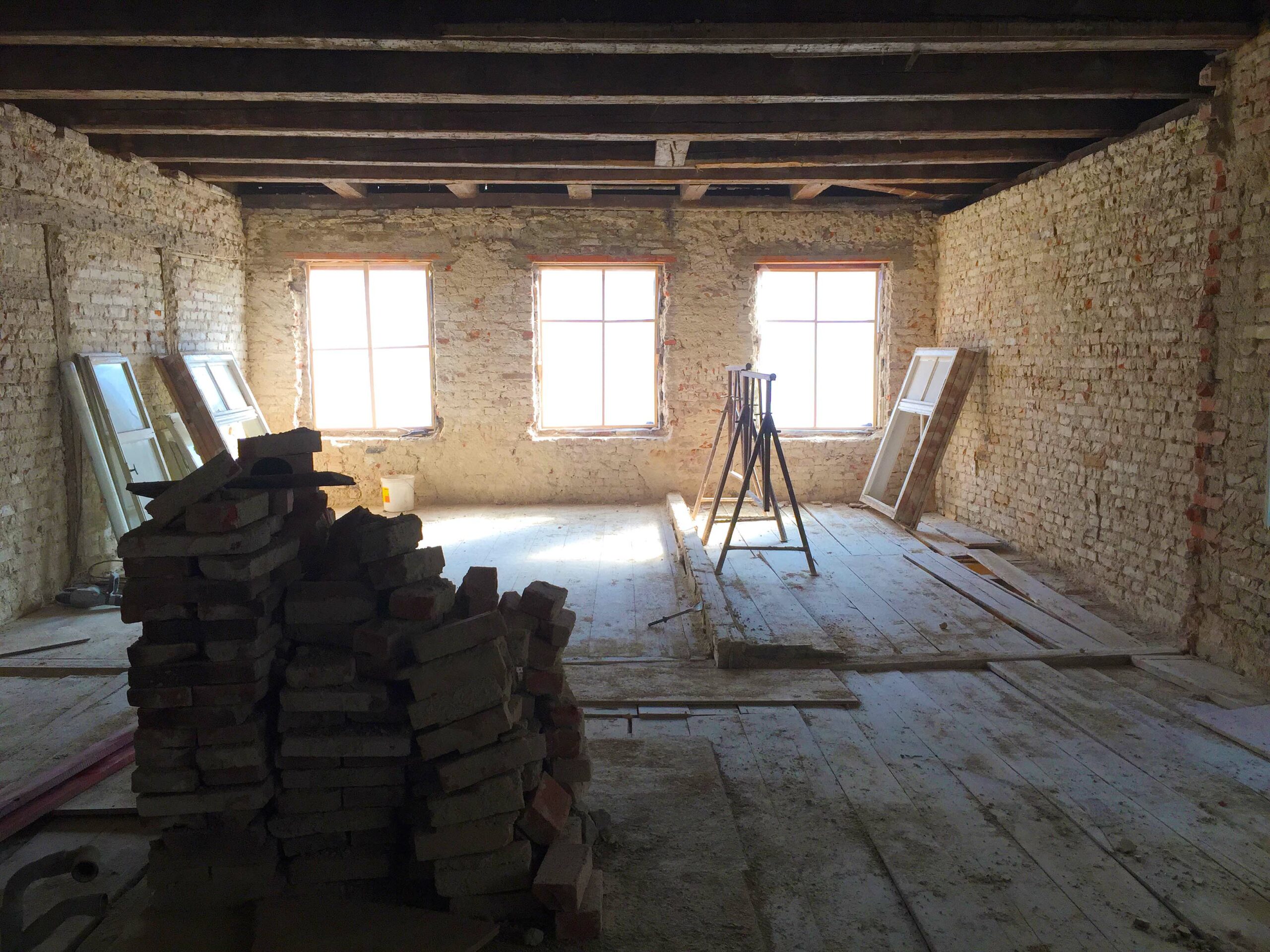
Die alten Holzstürze wurden durch Ziegelstürze ersetzt. Rückgebaute Reichsformatziegel wurden aufgehoben und woanders verbaut.
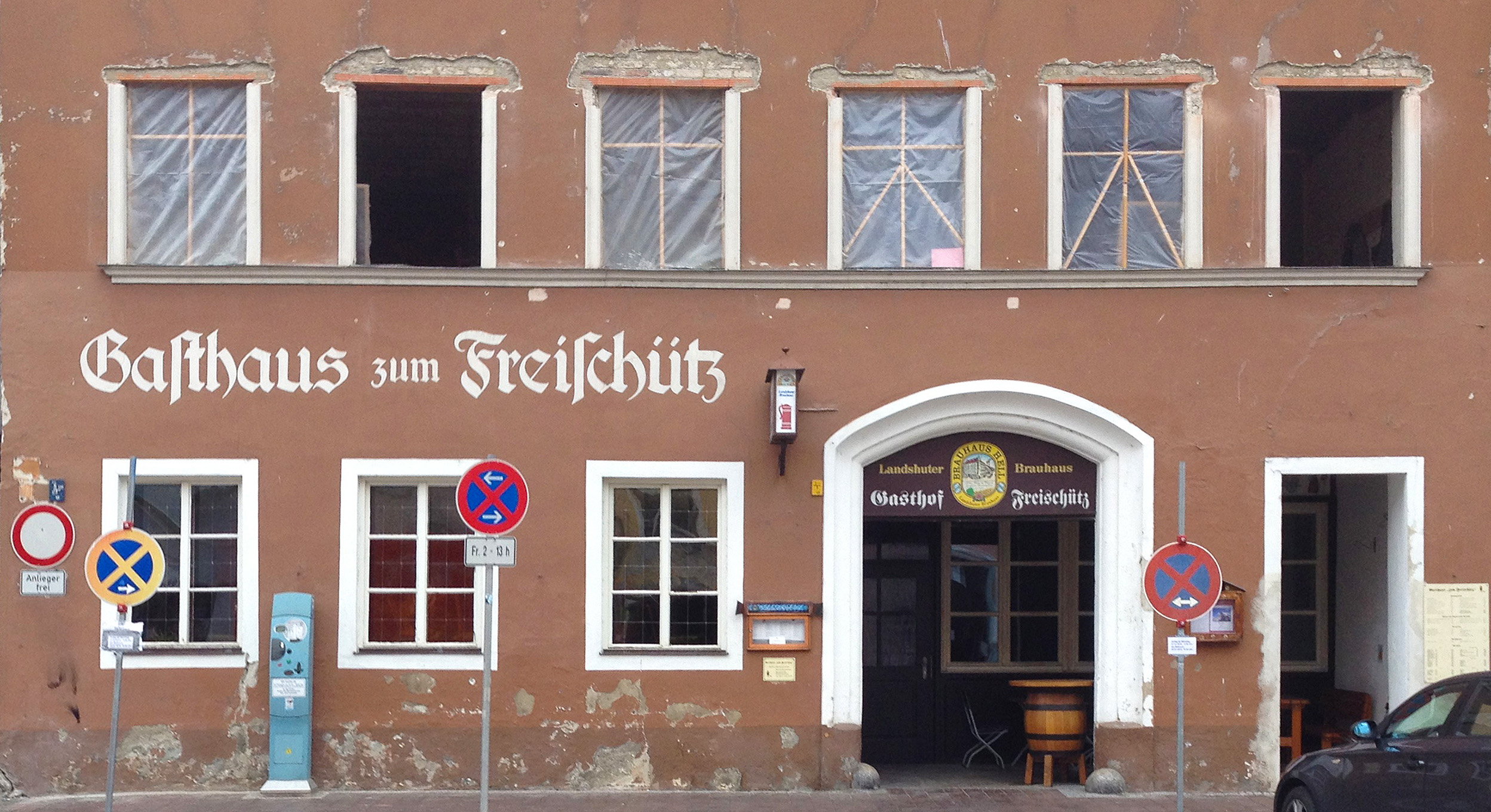
Die alte Fassade, vor der Sanierung
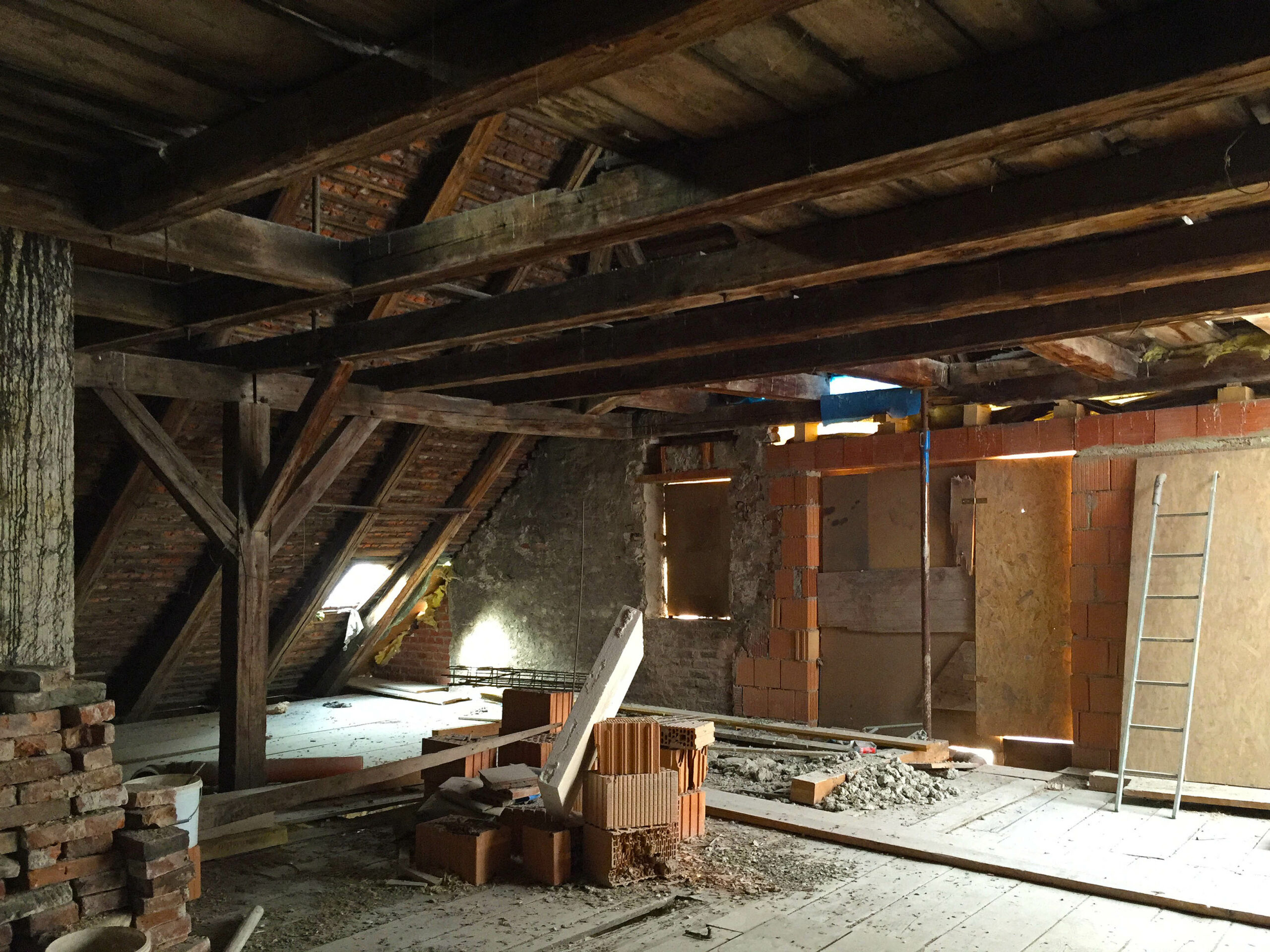
Der Dachstuhl vor der Sanierung
Die Verwandlung
Bildnachweis: Filip Fichtel
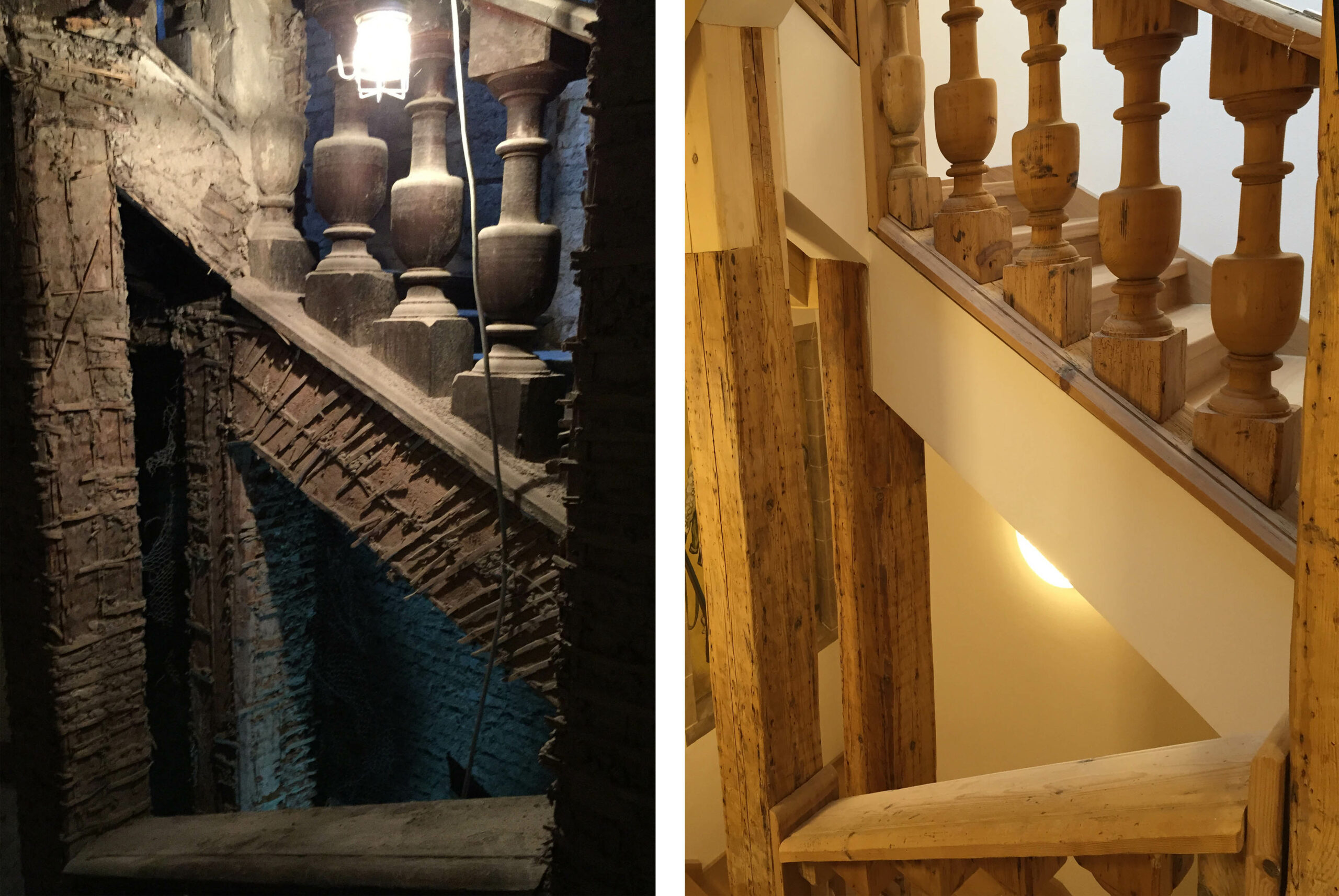
Das Treppenhaus
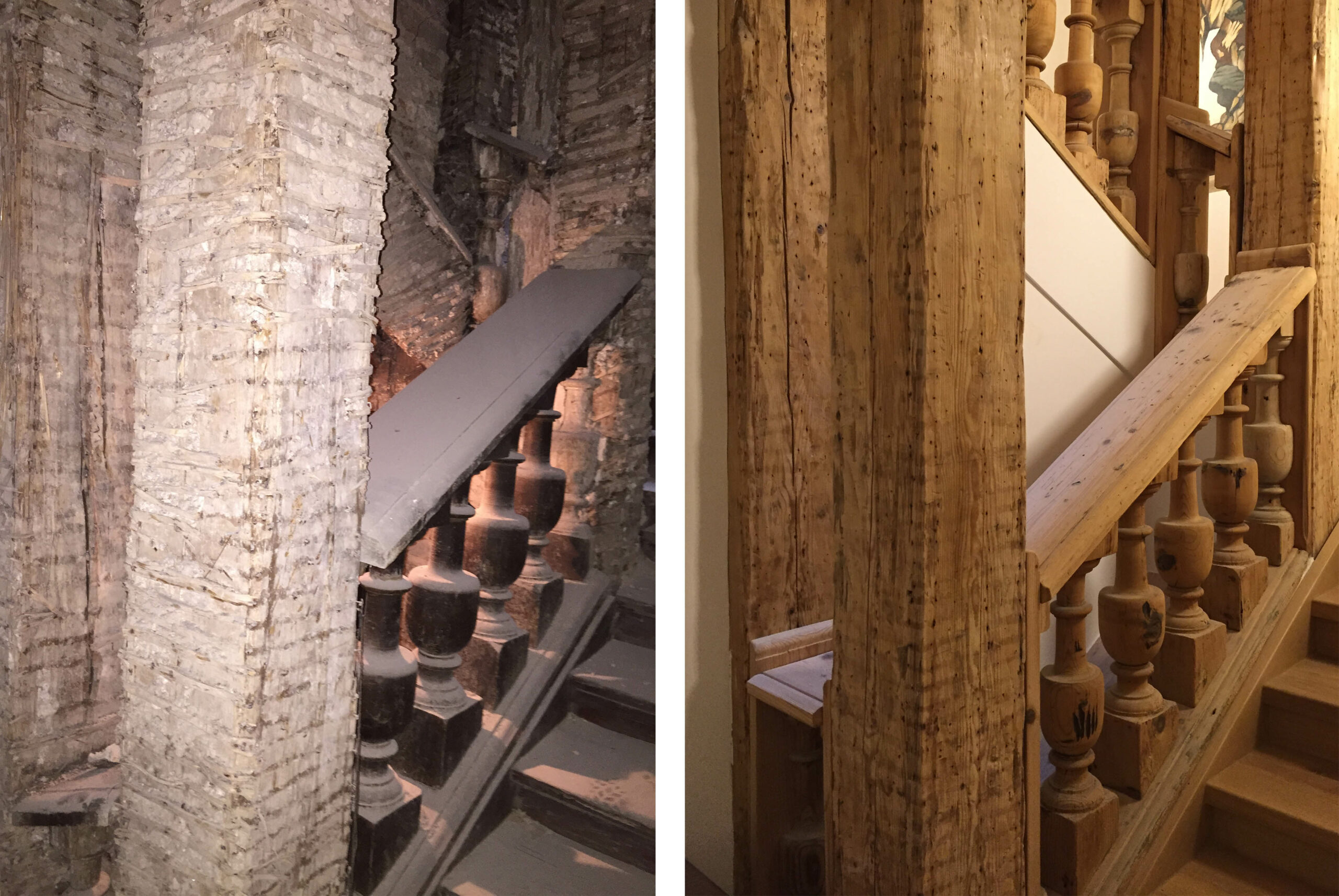
Das Treppenhaus
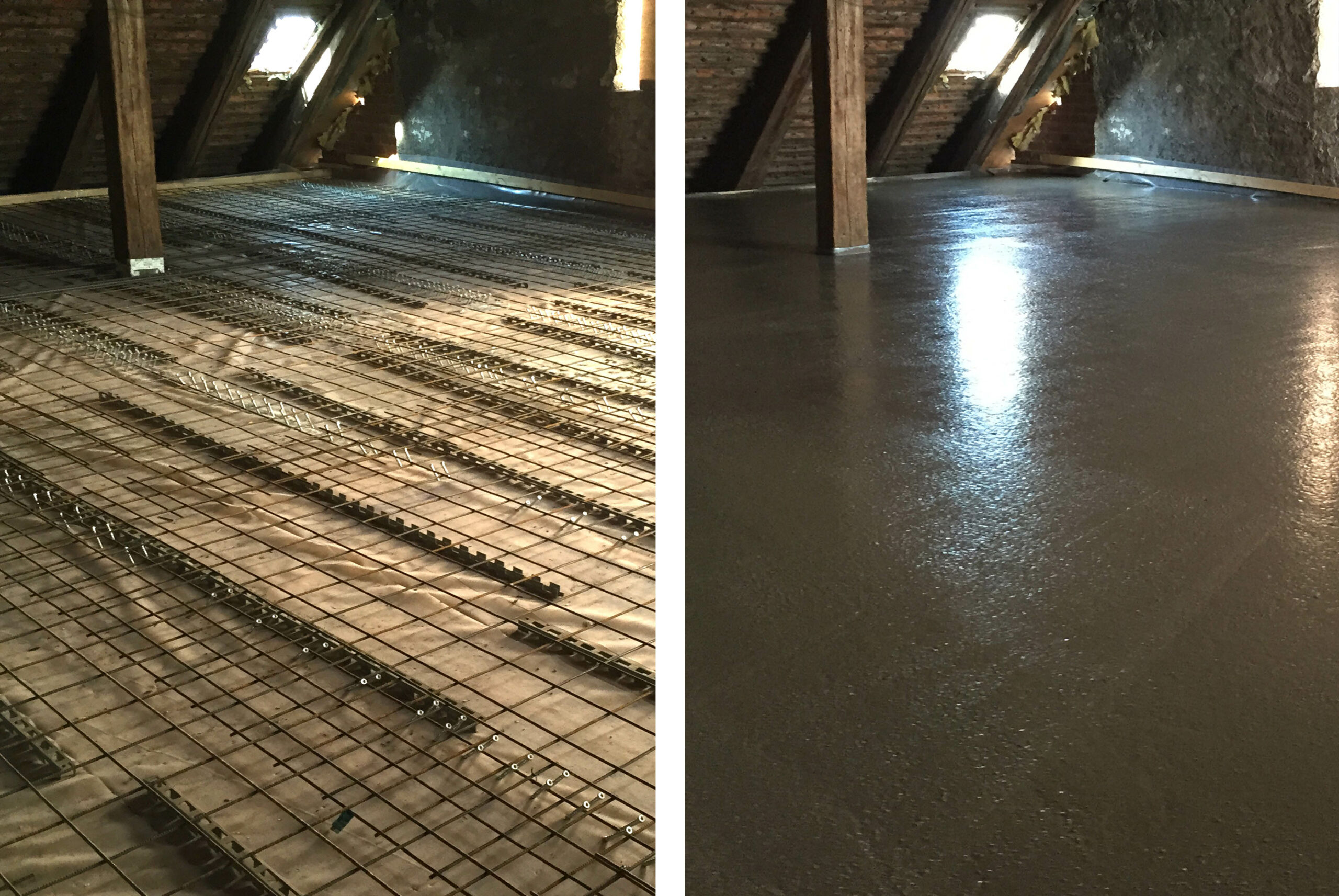
Einbringen der Holz-Beton-Verbunddecke im Dachgeschoss
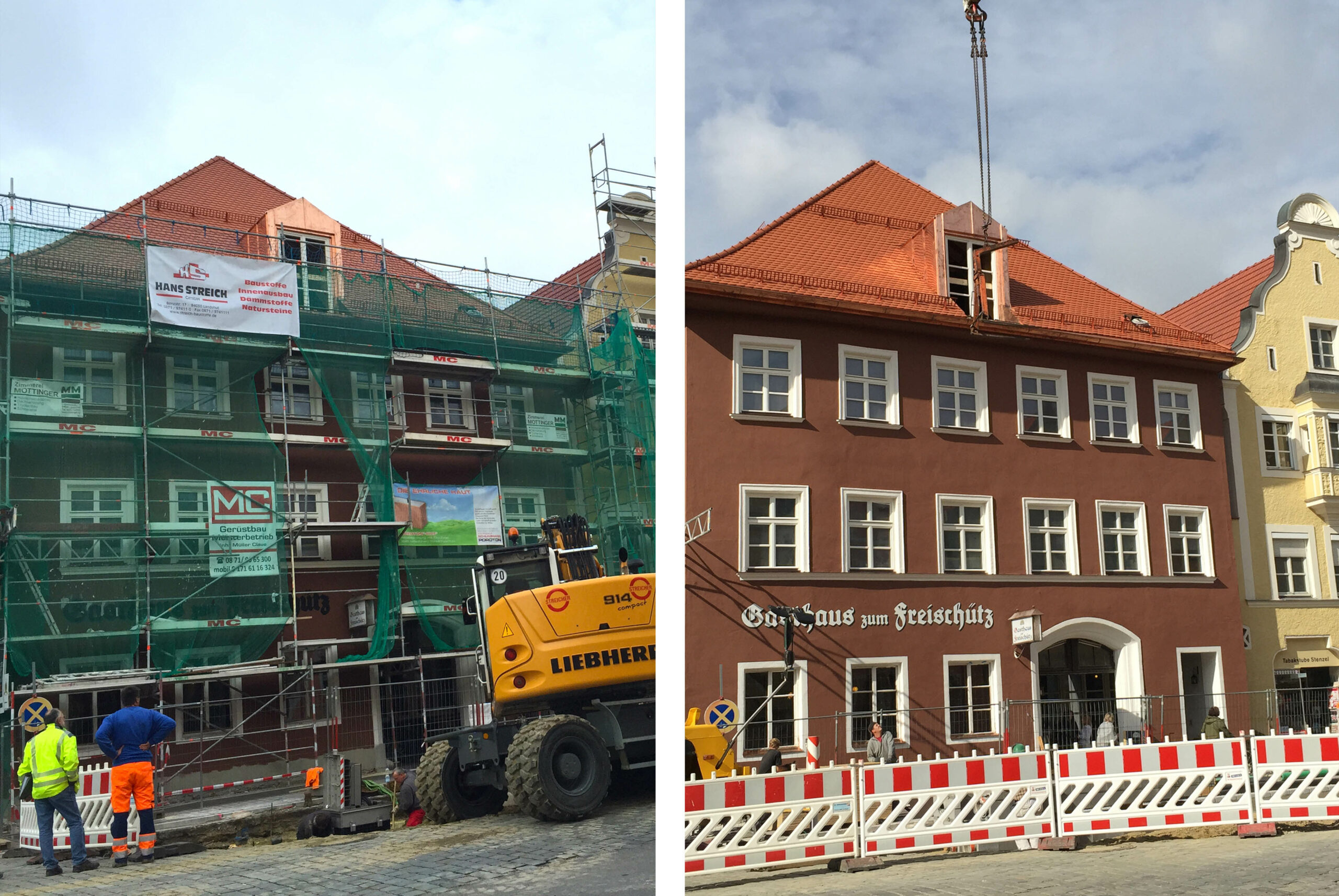
Das Auspacken der „neuen“ Gebäudehülle
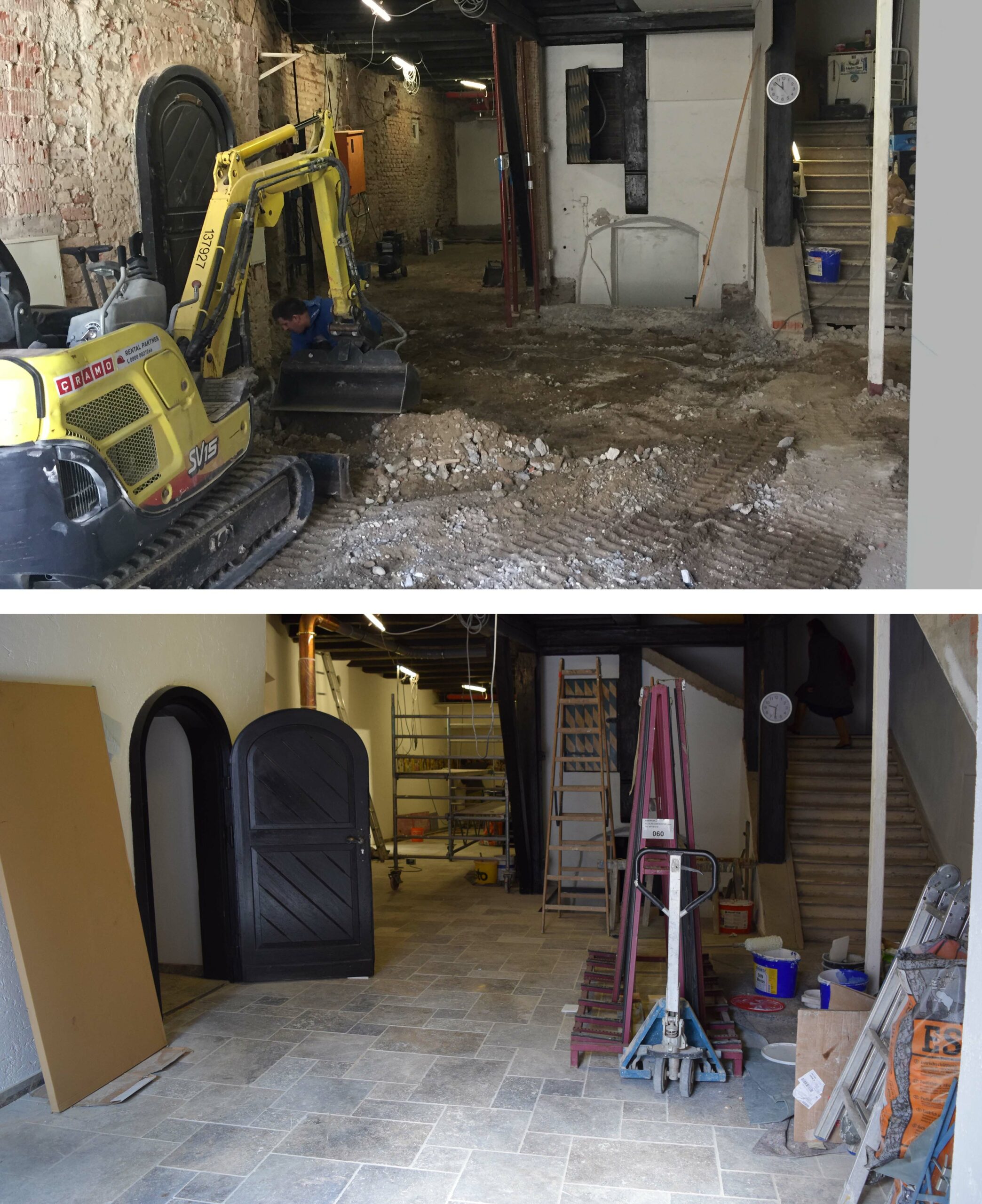
Die neue/alte Schwemme des Freischütz
